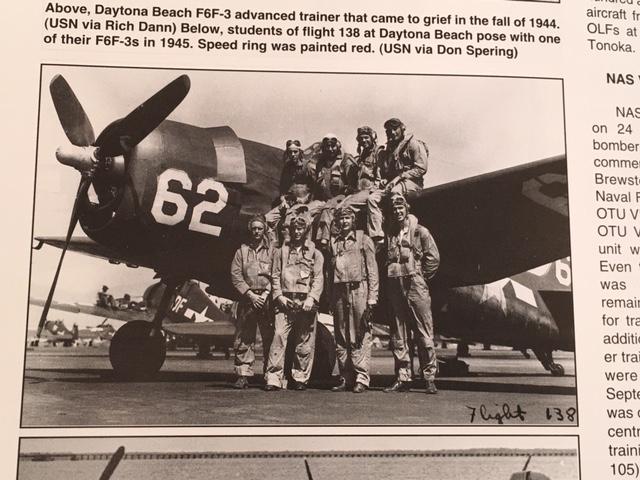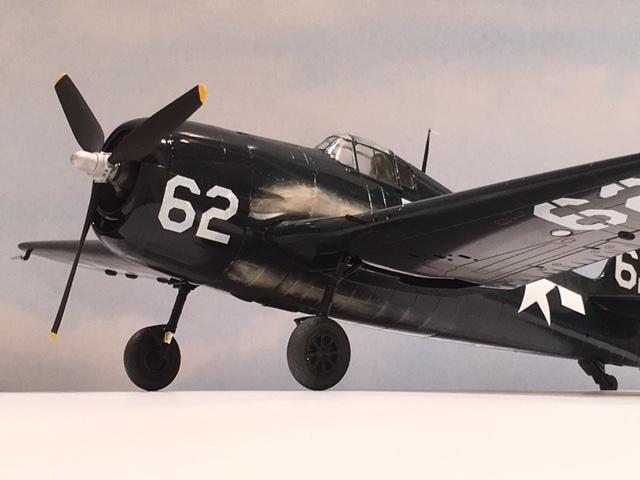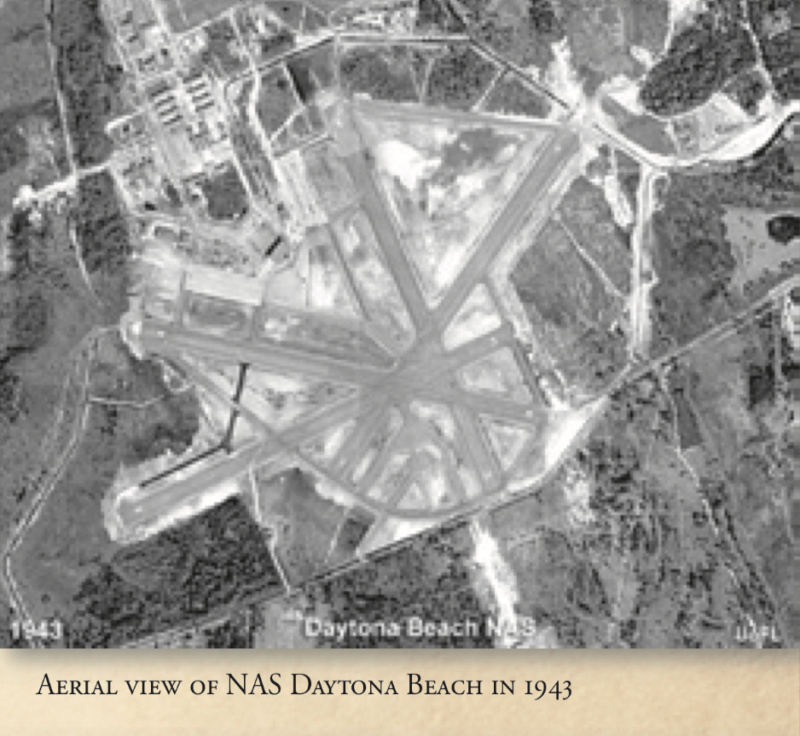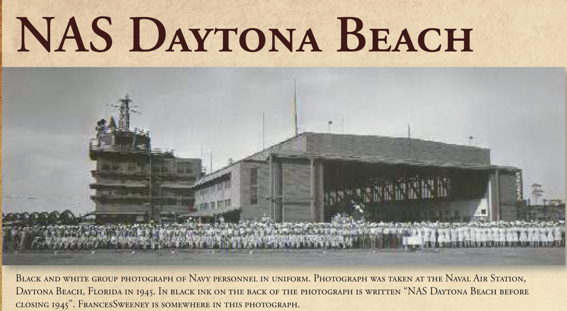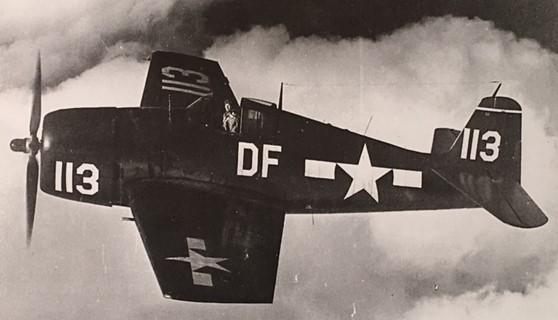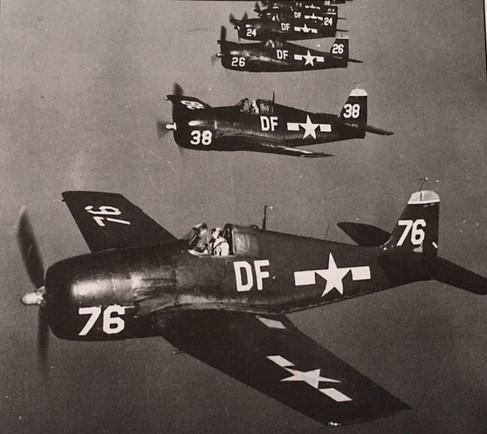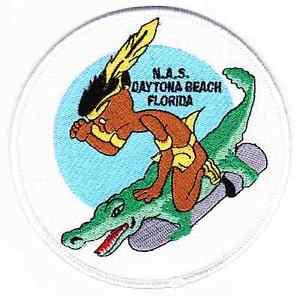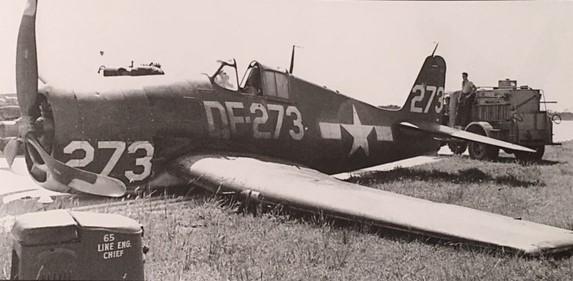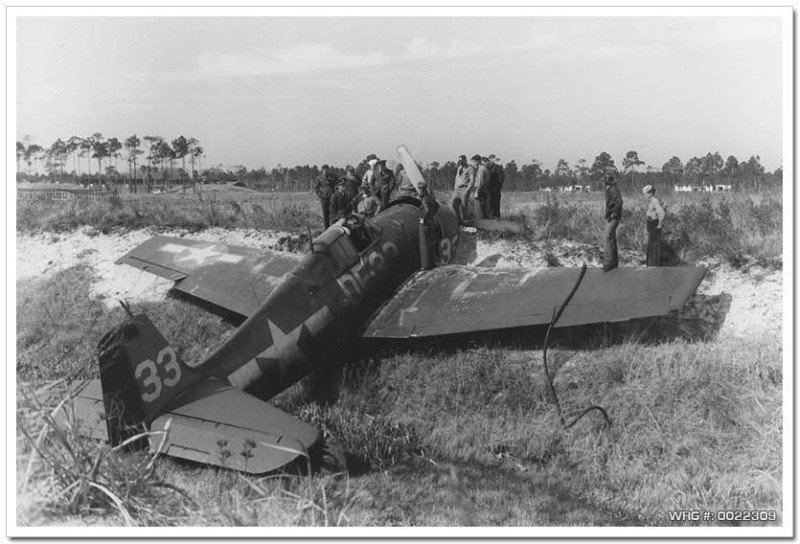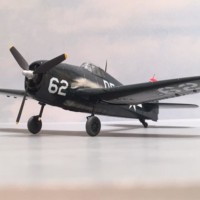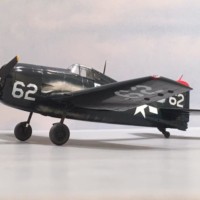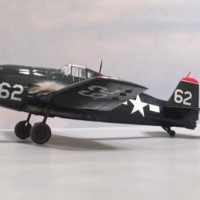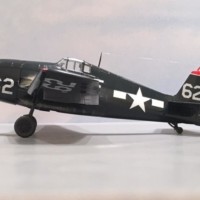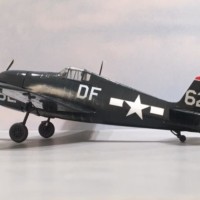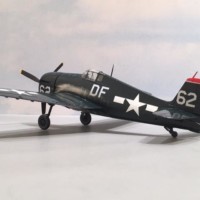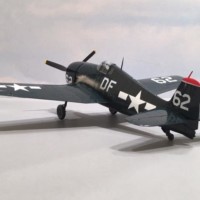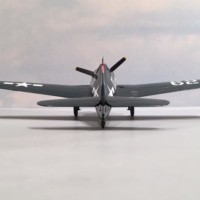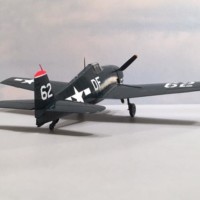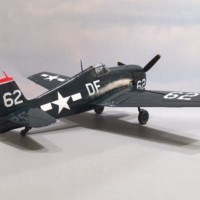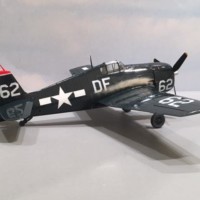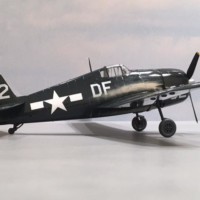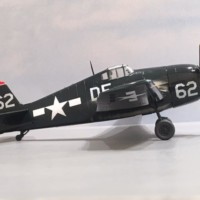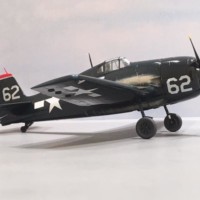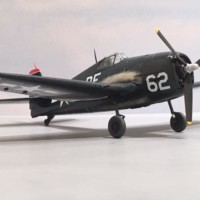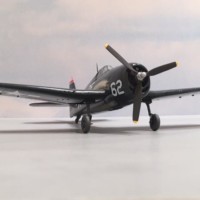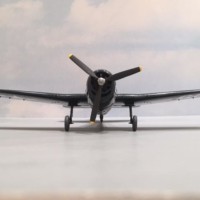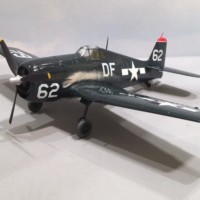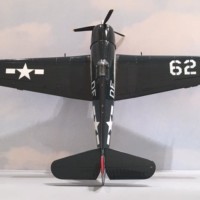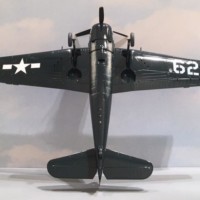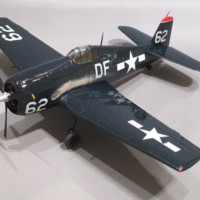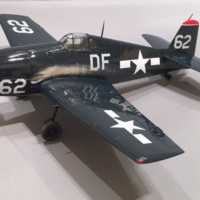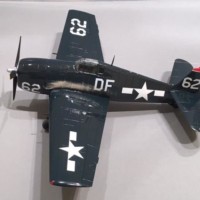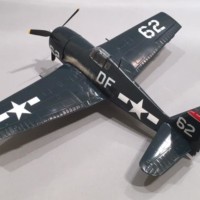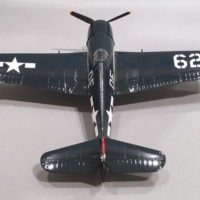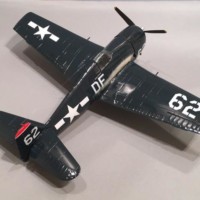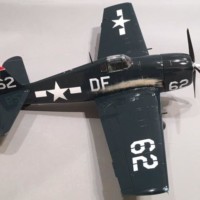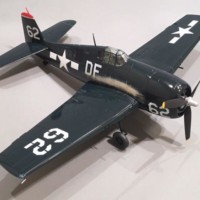Hasegawa 1/48 “Year of the Cat” NAS Daytona Beach F6F-3 Hellcat “Flight 138” 1945
Well the New Year is off to a great start... I just finished up the first model for this Year. Granted, most of the work was done last year, so it only needed some little things completed to make it whole. One down and three more Hellcats to finish up...
This one all started with me finding some very cool pictures of one of my favorite planes in a book I have. The book is called "Naval Fighters Number Ninety-Two Grumman F6F Hellcat" by Steve Ginter... It's an excellent book and I highly recommend it to all of you 'Cat fans out there.
The book has several pictures of Hellcats that were assigned to a stateside Naval Air Station training base... called NAS Daytona Beach. This also happens to be my hometown...
I just had to pick a plane from the Daytona NAS (which stands for Naval Air Station) and get busy...
This picture is the one I chose as inspiration for the build. Unlike what the caption above the photo says, I don't think this plane had a red speed ring on the cowling... notice the Hellcat in the background, below the propeller. It has it's tail positioned towards the photographer... more on that later.
and what I ended up with as a finished plane...(minus the pilots in the original photo).
Here's a little history about the Daytona Beach airport, before Daytona became the NASCAR capital it is today...
The Daytona Beach Airport was built during the mid 1930's. Prior to this, the area was served with a much smaller airport located not far away near the Halifax River, called "Bethune Point". If you go back even further, planes simply landed right on the beach... It must have been something else to be a barnstormer !
Shortly after WW2 started, the US Navy took over most airports in the area and put them to use for the War effort. Daytona Beach was no exception. The Navy extended the main runway and also widened it to 200 feet wide at the same time.
Here's a photo of the airport as it looked in 1943 after these improvements were made.
Now as a comparison, here's a modern photo of how the airport looks today ... You will notice that most of the runways are now gone... and a 2.5 Mile long NASCAR Speedway is right next door... Embry Riddle University, shopping centers, parking lots, a larger mall, and a High School now occupy the places where the runways once were.
Central Florida was a hotspot for training Naval Air and US Army cadets during the War. The state was chosen for it's better than average flying weather when compared to the rest of the Country. Daytona Beach was initially used as a Dive Bombing training location and together with the nearby Sanford and Deland Naval Air Stations, many young aviators were turned out . Several OLF's (Out Lying Fields) were used to augment the main bases of Daytona Beach, Sanford and Deland. These were Tomoka (now called the Spruce Creek Fly Inn), Ormond, New Smyrna. Farther North there was Bunnell and Palatka. but these two Stations were mainly under the control of Jacksonville, which was a major training base. Farther South there was the main base of Melbourne and Miami, which were primarily Fighter training locations. Where the Space Center is now, it was once a Navy Base during WW2, and was called NAS Banana River.
Here's a picture taken of some service personnel at Daytona Beach NAS during the War.
and a few photos of Grumman F6F Hellcats that were stationed here in Daytona Beach:
Daytona Beach planes had the letter "D" as a prefix and the "F" was for "Fighter" Deland NAS had the letters "DE", followed by "S" for "Scouting" (used on SBD Dauntless planes which trained in Deland extensively) or "F" for "Fighter". The majority of the training locations had their own set of letters used as a designator.
Here's a flight of Hellcats flying in formation somewhere over the Atlantic Ocean.
Remember when I mentioned the speed ring wasn't red as mentioned in the original picture ? Here you can see the tip of the rudder / fin assembly has a red tip with a white stripe. The cowling is overall Gloss Sea Blue. Red would have showed up in the same contrast as the tip of the tail has.
If you look really close at the original photo where the caption states the speed ring was red... You will notice another F6F in the background, just below the propeller. This Hellcat has the tail positioned towards the photographer, and you can clearly see the tip is also red, with a white stripe, just as in this formation picture here.
This is why I don't think the speed ring was red. It's probably just the way light reflects on the cowling.
As a bonus, I found this cool picture of a unit patch that was worn by personnel stationed at Daytona Beach... An alligator being "flown" by a Native American Indian, carrying a bomb... How appropriate !
Initially F4F Wildcats and SBD Dauntless planes were stationed at Daytona, as well as Deland. Sanford however was more of a Fighter base, and I don't think that SBD's were stationed there.
Later as the War progressed, the types of planes used here also changed. There was a large contingent of Curtiss "Helldiver" SB2C's stationed here in Daytona, along with the F6F Hellcats in the later part of the conflict. Deland had SBD's and later PV-1 Ventura's.
This area had it's share of accidents and crashes... This was especially true when you consider that many of the pilots flying here had very little flight time. Here's a picture of a F6F-3 after it bellied in on a runway in Daytona... "DF-273"
This one lost it's engine and became a glider..."DF-33". It crashed somewhere at the end of one of the runways... Craig Abrahamson and I both think it was the "East / West" main runway since that's the prevailing wind direction...
The area was also fatal to flyers... Hundreds of fledgling flyers perished while learning to fly here in Florida ... Many more pilots and aircrew died throughout the Country on various training missions. There's an old military saying that goes something like this: "Train hard for War and Bleed less during it." Sometimes we bleed while training too...
From Melbourne alone, there were at least 63 pilots who died... Here's a quote about Melbourne NAS directly from the book I mentioned earlier:
"From January through December 1943, 546 pilots graduated, 35 were washed out and 20 died during training. From January through October 1944, 916 were graduated, 62 washed out, and 27 were killed. By the end of the War, 63 pilots had died in training. A breakdown of these losses was :
Midair Collisions 24
Loss of Control (spins / Stalls) 15
Failed to Return 6
Landing Accidents 6
Engine Failures 4
Structural Failures 4
Weather 2
Take-Off 1
In Flight Fire 1
Melbourne had a Fuselage Code of "W". At one point during the War, Melbourne also used the fuselage codes of "ME".
Here again as with all Navy Fighters at the time, they used the letter "F" to designate "Fighters" So Melbourne F6F's had the side fuselage code of "WF".
Here's one that crashed from Melbourne NAS, and set a small portion of the nearby woods ablaze... "WF-24"
I wanted to build this plane as a tribute to my hometown, and as a tribute to all of the men who lost their lives while learning how to fly for defense of their Country... Freedom is not Free.
This plane was built as part of the "Year of the Cat" Group Build. I have three others as part of this build thread that are very close to being completed.
Here's a link to the build log, which is still underway as the last three 'Cats are not quite done yet.
http://imodeler.com/groups/year-of-the-cat/forum/topic/3-hasegawa-f6f-hellcats-1-daytona-nas-1944-45-2-blue-angels-bird-3-target-tow-or-drone/
A few more little notes:
Some of you sharp eyed readers may have wondered why are the landing gear covers off ? Did he forget to put them on ? Nope... Most of the Hellcats used in training units had the landing gear covers removed.
Or why is there only a single .050 caliber weapon in each wing ? These planes were used as training planes, but they were still armed, just in case a German U-boat was spotted offshore. A few well placed .050 caliber rounds could possibly prevent an enemy sub from diving, allowing other planes and ships to come in with depth charges or bombs and finish the job.
Plus they could also practice gunnery and not use as much ammunition so that it could be used elsewhere in the world where it was more urgently needed.
I realized the planes shown in the pictures were all set up like this. You can see it in the pictures I provided...
Meanwhile, here are some more pictures showing the completed build... Some may say it looks a little too shiny for a scale finish of Gloss Sea Blue. It probably is... but I like it.
Towards the later part of the War, most Hellcats and F4U's were repainted in overall Gloss Sea Blue after they were refurbished. It's kind of neat to see an earlier plane with a later paint scheme, at least for me.
Enjoy, and as always...
"Comments are encouraged".
Happy New Year !

